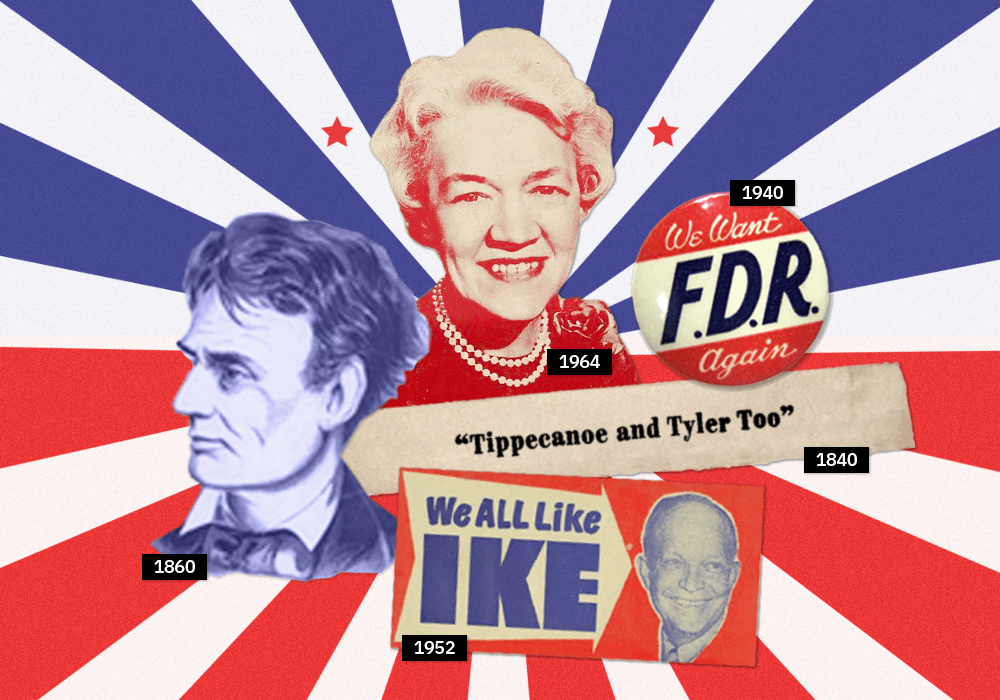These 5 presidential marketing campaigns made history — here’s why
We know it’s not always polite to talk about politics at the dinner table — or online, for that matter — but we’re treading safer ground. Join us as we rewind to elections past (we’re talking pre-1970s, folks!) to highlight some of our country’s most iconic political designs and slogans from previous presidential campaigns. With a retrospective look at five key runs for the presidency, we’ll see how campaign strategies became more solidified around messaging and images, with a smaller focus on policy. We’ll also track the start of trends that have become foundational pillars for any modern campaign, showing how just one trail-blazing freethinker can shape tradition for generations to come.
William Henry Harrison
Election Year: 1840
Political Party: Whig
Why We Care: William Henry Harrison is actually the father of the campaign slogan, despite being known as the first president to die in office. Together with his running mate, John Tyler, Harrison used the phrase “Tippecanoe and Tyler Too” to remind voters about his victory as general in the Battle of Tippecanoe (and get some sweet press for his running mate). After Harrison’s successful campaign, no major presidential candidate has run for the highest office without one.
As modern-day marketers, we love the concept of a quick, easy-to-remember tagline. Brands are often defined by their slogans before their values, and knowing how to craft a good one sets the stage for building out the more substantive parts of a campaign.
Abraham Lincoln
Election Year: 1860
Political Party: Republican
Why We Care: “Honest Abe” cemented his place in history thanks to his presidential guidance during the American Civil War, but when he first ran for office, healing a fractured nation wasn’t at the top of his priorities list. Instead, Mr. Lincoln ran on the promise that Americans could “vote themselves a farm,” capitalizing on the newly introduced homestead acts throughout the West as the cornerstone of his campaign.
From an editorial standpoint, we’re interested in this particular marketing angle since it’s so forgettable — a rare occurrence for an industry that lives or dies by recognition. Abraham Lincoln’s place in American history is perhaps more ubiquitous than any other, but his early work — which ultimately won him the election — became overshadowed by his later accomplishments. We’re going to remind ourselves that our first good idea shouldn’t be our last (and to be willing to pivot when things go pear-shaped).
Franklin Delano Roosevelt
Election Year: 1940
Political Party: Democrat
Why We Care: Franklin Delano Roosevelt was the only president to serve more than two terms — mostly based on precedent rather than law — until he decided to buck the tradition that had been in place since George Washington played the part. Roosevelt was savvy enough to leverage the opposition’s critiques of his third presidential election as a positive for him. “Better a third term than a third rater” became a rallying cry for his supporters and aided FDR in keeping his place in Washington for (almost) two additional terms.
Taking criticism and making it part of your brand is powerful, and we’ve got to hand it to FDR for doing so not once, but twice — because, of course, he ran for a fourth term, too. What others see as a detriment could, in fact, be the key to carving out a unique space and winning the presidency!
Dwight D. Eisenhower
Election Year: 1952
Political Party: Republican
Why We Care: In the post-WWII auto boom, Dwight D. Eisenhower made use of the most precious and newly available real estate in America: the car in front of you in the morning traffic jam. While bumper stickers have become standard practice for most politicians’ merch selections, we’ve got to credit Eisenhower for thinking of it first. It’s also a perfect example of how marketing trends reflect larger societal shifts — in this case, the auto boom.
From a design perspective, we love the red, white, and blue (of course!), and the bold typesetting makes it easy to read no matter how fast you’re driving. Copywise, we can’t resist a good pun.
Margaret Chase Smith
Election Year: 1964
Political Party: Republican
Why We Care: While America has not yet elected its first female president, Margaret Smith paved the way by becoming the first female candidate to be nominated during a major party’s national convention. While she ultimately lost the Republican nomination to Barry Goldwater (who would lose in the general election to Lyndon B. Johnson), she declared, “When people keep telling you you can’t do a thing, you kind of like to try.”
Her campaign collateral was simple but elegant, a vibe Ms. Smith kept during her tenure as a congresswoman in Washington where — among other things — she successfully campaigned for the rose to be declared the national flower of the United States. She saw no need to complicate campaign posters with anything other than her name and her bid for the presidency, proving that sometimes simpler is best.
While Stoke hasn’t joined the trek along the campaign trail, we’ve got a knack for doing just about everything else. Discover how we can help you tell your story today.



